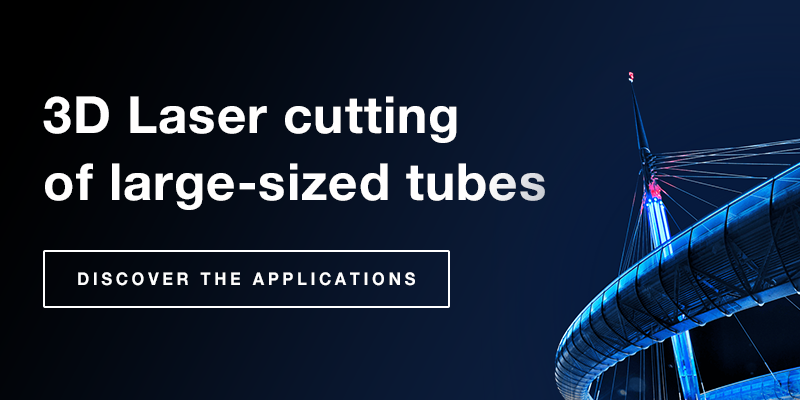Laser cutting of tubes and profiles is rapidly growing in the production of various types of industrial vehicles such as agricultural machinery, trucks, equipments for warehouse logistics, constructions, electric power generators, etc.
Today, you may find Lasertube systems both for machining chassis components and many other structural parts of vehicles or of their work equipment.
Here, the most important aspects that has encouraged many producers, as well as contractors operating in this field, to take advantage of tube or profile laser cutting systems to produce components for industrial vehicles:
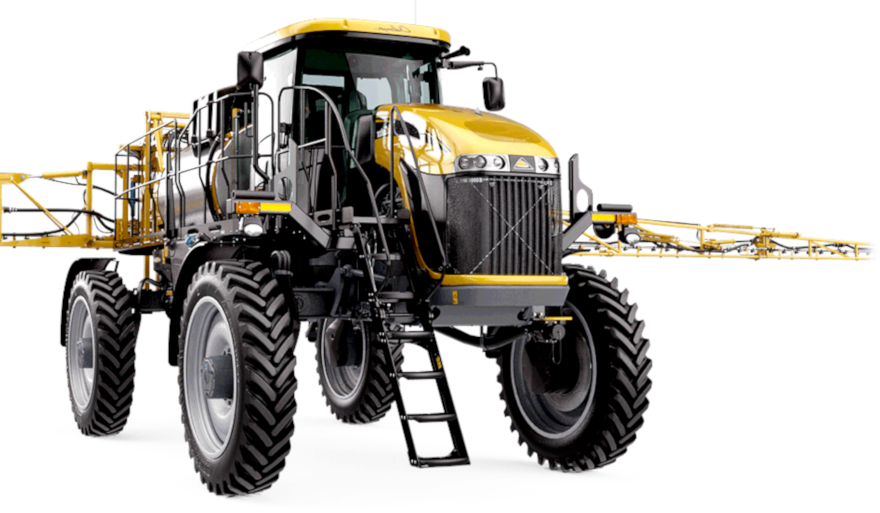 Example of agricultural machinery.
Example of agricultural machinery.
Greater production flexibility
In sectors, such as the automotive industry, chassis and other components are often produced in large volumes, while batch production for industrial vehicles is usually smaller. Indeed, some vehicles are frequently made or customized according to specific requests from customer.
Small batch production, a strong innovative drive deriving from the demanding operating conditions of the vehicles, and a strong competition in this sector are encouraging factors to invest in increasingly flexible fabrication systems, that enable manufactures to respond quickly to changing market needs.
Tube and profile laser cutting systems, besides streamlining processing and reducing secondary operations, allow program change and production start - of a new part quickly, without mechanical adjustments, tool changes, etc.
This work context is ideal to produce in a “Made-to-Order” perspective or to develop new products more rapidly and increase productivity.
For example, in part shown below, the use of tube and profile cutting system LT14 FIBER, has reduced processing time to 8 minutes and 20 seconds, compared to 67 minutes necessary with the traditional technologies for chip removal and handling on several machines. As a result, part cost is reduced by 25%.
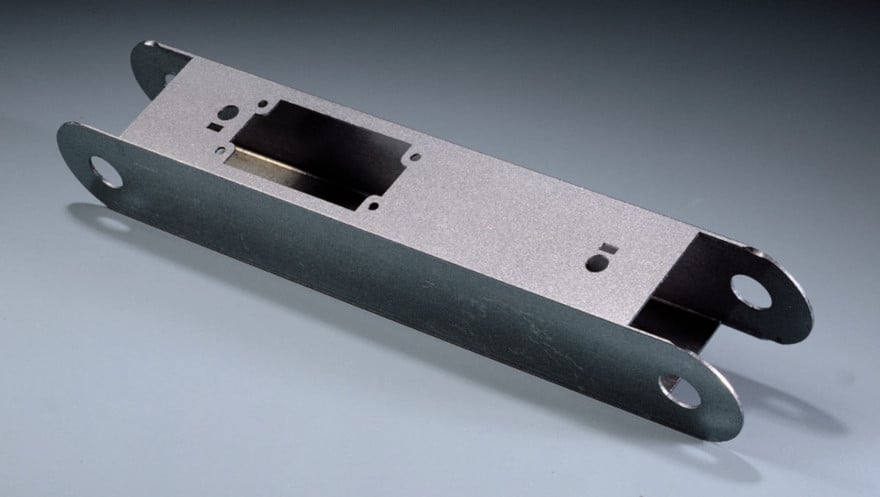 Industrial vehicle component made with Lasertube system LT14-FIBER.
Industrial vehicle component made with Lasertube system LT14-FIBER.
Streamline and improve production process
In the industrial vehicle sector, a Lasertube system can be used to produce very different components: chassis parts, exhaust pipes, bodywork tubular components, equipment, accessories and interiors.
In chassis production, the Lasertube systems allow production of joints and supports, but also bolt and rivet holes. Having to withstand extreme mechanical stress, chassis parts are typically made from thick material and designed to resist dynamic torsion and bending stresses.
In this context, laser cutting systems made specifically for processing large diameter tube, profiles, and special shapes (“C”, “U”, etc.) can be used. If equipped with a 3D cutting head, better processing results can be obtained. For example, LT14 FIBER can perform 3D cuts on tubes or profiles up to 350 mm diameter with 20 mm thickness and up to 16.5 meters length.
Many operations, one process
In order to firmly connect all the other elements of the vehicle, bodywork, engine, tubes, cables or accessory elements, it should be possible to make threaded and unthreaded holes, slots, various geometries, etc. on the chassis acting not only as support but also as anchor point.
Laser technology offers a significant advantage as many machining processes previously carried out on dedicated machines (drilling, cutting to size, deburring, chip removal machining, etc.) can be replaced with a single laser cutting operation.
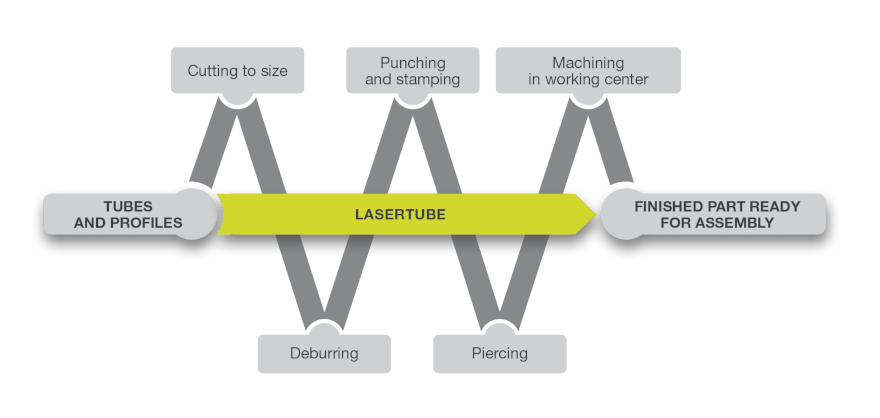 Operations such as drilling, cutting to size, deburring, chip removal machining, all may be replaced by a single laser cutting operation.
Operations such as drilling, cutting to size, deburring, chip removal machining, all may be replaced by a single laser cutting operation.
Furthermore, differently from other technological processes, laser cutting has the great advantage of using light as single tool, therefore it is not subject to wear of cutting edges nor to tool change depending on machining.
Would you like to know more about the origins of laser? Read this article.
Some Lasertube systems are already equipped with drilling, tapping and flow drill systems in order to make threaded holes during process with the other cutting operations.
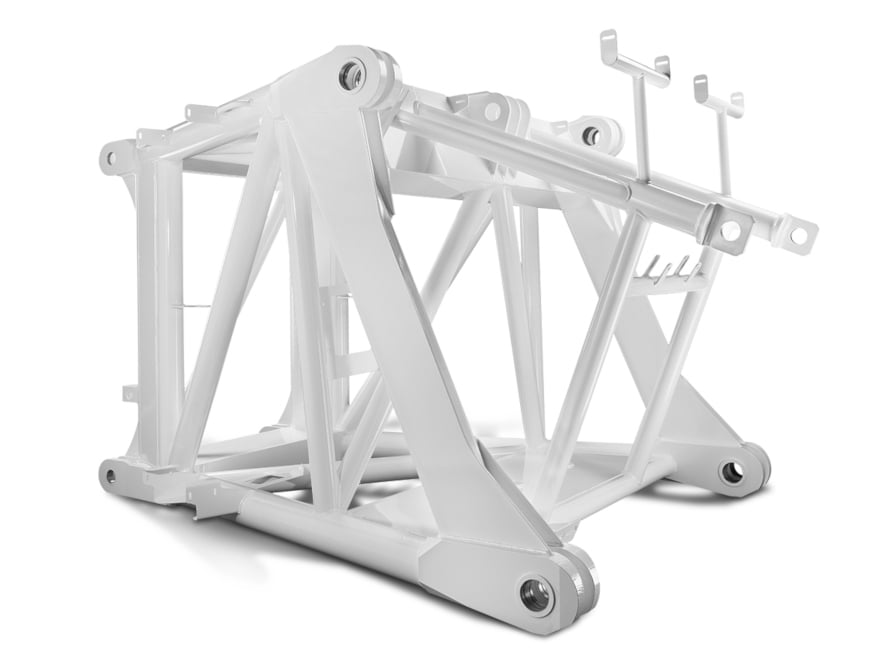 Example of construction machinery chassis.
Example of construction machinery chassis.
Complex chassis software management
Chassis of agricultural or industrial vehicles consist of parts having different sizes and sections. The use of advanced CAD/CAM programming software able to operate both on the entire chassis or structure and on single components offers time savings during the design phase.
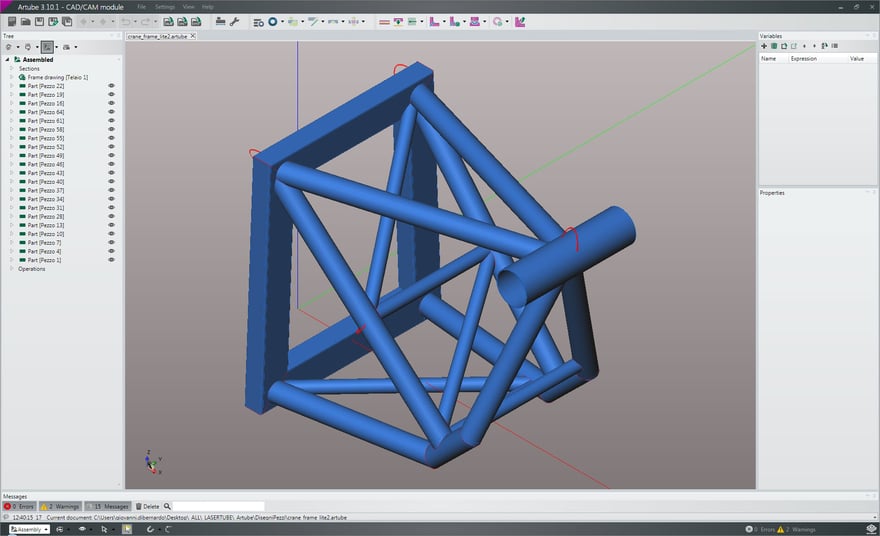 Artube CAD/CAM software is able to operate both on the entire chassis or structure and on single components.
Artube CAD/CAM software is able to operate both on the entire chassis or structure and on single components.
The software’s specific feature, together with 3D laser cutting head versatility, allows joints between tubes and profiles that have different section and diameter to be designed. It is also important that the software may import any type of structure in different formats (STEP, IGES, IFC, …) and that it may also be equipped with specific plug-ins to communicate with other CAD software commonly used in mechanical design, such as Solid Works.
Productivity and accuracy
In vehicles such as trucks or agricultural machinery, chassis length may frequently be over ten meters. This makes it more difficult to keep the position tolerances of geometries along the bar, thus impacting welding operations too. In a 3D laser cutting system for large tubes or profiles, chucks play an essential role.
Chucks are the parts of the Lasertube system used to handle the piece (rotation and longitudinal movement). In Lasertube systems for large tubes and profiles, the two intermediate chucks and the tail chuck can move independently, while gripping and releasing the piece individually. The tube or the beam is gripped only once during the whole process, whereas the head works at the two ends of the tube or at the center. This method improves part accuracy and drastically reduces cycle time.
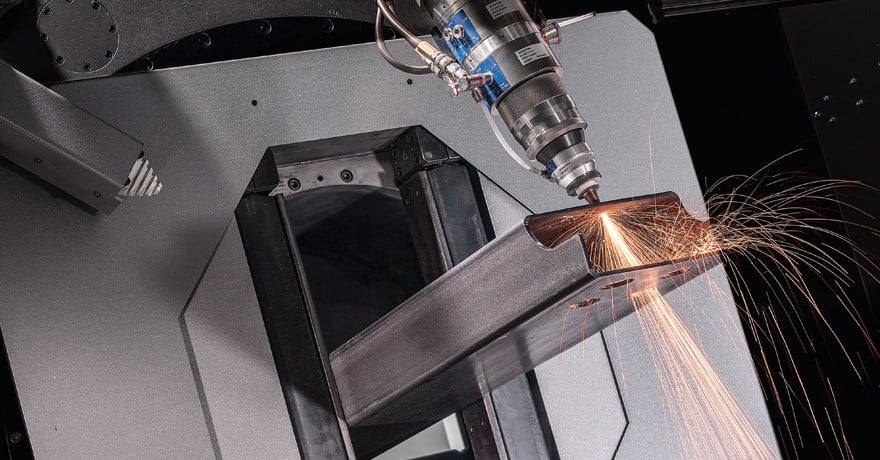 Tubular component cut with Lasertube system LT14.
Tubular component cut with Lasertube system LT14.
The chucks are fully-electric and automatically adjust, so specific tools aren’t required when changing from one type of bar to another. Not only do you gain flexibility, but also realize reductions in cycle time and operational costs.
When these types of chucks are used with efficient automatic loading and unloading systems, overall productivity is improved and also the integration into the production chain is far easier.
Laser cut a wide variety of profiles and materials
While the industrial vehicle chassis is generally made of medium-carbon steels, other accessory components may be made of stainless steel or aluminum. In these cases, it may be important to use a technology able to cut all the different materials efficiently. Fiber Lasertube systems meet this need and are able to cut mild steel, stainless steel and aluminum alloys or copper with the same simplicity.
Another important factor is the capability to cut complex section tubes or open profiles of any type. These geometries improve the mechanical strength of structure and also optimize space and use of material.
The 3D laser cutting head and the programming software installed in the Lasertube systems for large tubes and profiles are essential elements that allow any type of section to be cut.
Conclusions
Thanks to the many advantages offered, the 3D laser cutting systems for large tubes and profiles may also be used in a variety of other sectors, such as the construction, or ship building, oil & gas, energy, automatic warehouse structures, frameworks, and other service structures.
These systems are introducing new standards of quality and productivity every day in a wide variety of applications.


